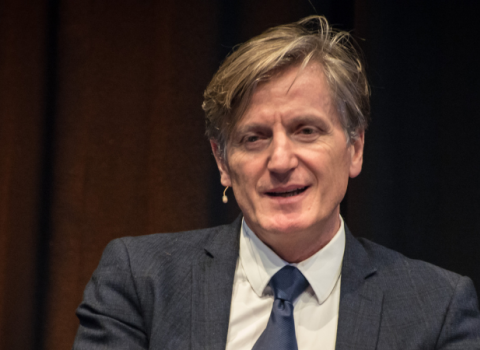A special briefing on the European Institute of Innovation and Technology, based on information presented at a Science|Business meeting in Brussels.
 The European Institute of Innovation and Technology, known simply as the EIT, will soon be inviting universities, research institutes and companies to participate in new research projects.
The European Institute of Innovation and Technology, known simply as the EIT, will soon be inviting universities, research institutes and companies to participate in new research projects.The aim: to create a dynamic new force for innovation in Europe, with business and academia working together not only in the lab, but also in converting scientific breakthroughs into commercial reality.
Related article
Exclusive: KICs – one location ‘doesn't make sense’, says EIT head
The EIT: a two-edged sword, says leading rector
Science|Business held a half-day seminar on the subject on 22 January. Speakers included officials from the European Commission, and by telephone from Stockholm and Vienna, two members of the governing board of the EIT. Herewith, a briefing on the EIT, gathered from information presented at the meeting.
What is the EIT?
Karin Markides, President of Chalmers University of Technology
 “Benchmark what is unique in Europe. There is a risk that by mobilising the EIT we weaken what we already have.”
“Benchmark what is unique in Europe. There is a risk that by mobilising the EIT we weaken what we already have.”
“It is not like MIT (Massachusetts Institute of Technology), nor is it a network, nor is it a virtual entity. It is an EU body unlike any that currently exists, in that it doesn’t have an executive role, nor is it a regulatory body. It has a governing board located at the headquarters in Budapest; the KICs (knowledge and innovation communities) are halfway between networks and universities. The projects they will run will last between 7 and 15 years with the joint aims of education, research and business realisation,” said Pinuccia Contino, Member of Cabinet for Ján Figel, EU Commissioner for Education, Training, Culture and Youth.
“EIT is the first institution trying to see the whole innovation chain, from education to business. There will be a focus on entrepreneurial education. EIT is trying a new way of doing business, trying to capitalise on existing but fragmented excellence. EIT is also a new way to promote innovation; it’s about putting people together, VCs, researchers, corporations etc. EIT is the only initiative of its kind with a strong brand image. These are all elements that make EIT different to what already exists. EIT is excellence-driven. It will target excellent people in what amounts to a global outreach with the secondary goal of reversing the brain-drain from Europe,” said Lucia Recalde Langarica, head of the EIT task force, in the Commission’s Directorate General for Education and Culture.
Joachim von Heimburg, director of corporate R&D at Procter & Gamble
 “I'm impressed by the speed of progress in setting up the EIT. P&G has 30,000 patents, we welcome anything focused on innovation. But no surprise if I say Europe must improve as a place to innovate. There is still tension between academia and business, driven by a lack of understanding. The EIT has potential to deal with this fragmentation by creating a research area for both.
“I'm impressed by the speed of progress in setting up the EIT. P&G has 30,000 patents, we welcome anything focused on innovation. But no surprise if I say Europe must improve as a place to innovate. There is still tension between academia and business, driven by a lack of understanding. The EIT has potential to deal with this fragmentation by creating a research area for both.
“The EIT as a management structure can make a difference but it’s not easy.”
On the KICs: “I'd be very interested to see if we can participate. It depends on the focus of the KICs.”
“EIT is not just another EU research programme. We have too many of those already. The aim here is to cluster research and education together with entrepreneurship and industrial partners. A typical KIC would be situated in a university town that has a good business school and a history of entrepreneurial spirit,” said Alexander von Gabain, chief scientific officer, Intercell and EIT governing board member.
How did it come into being?
It was advanced in 2005 by Commission President José Manuel Barroso.
Political agreement was secured in April last year. Soon after that Budapest was chosen to host the headquarters, a chairman of the EIT’s governing board, Martin Schuurmans, was picked, and now the governing board is drawing up the official call to participate in the EIT.
What decisions lie ahead?
In the next few months the board will select KICs. There’s a stringent deadline for this – January 2010. The call for proposals will be launched in April this year and run until the end of August, followed by four months for evaluation.
How will it operate?
Joaqium Nassar, Deputy Research Coordinator, ParisTech
 “Paristech is strongly committed to the EIT. We have our own experience of a bottom-up approach. Re Co-location of KICs, I agree with the idea as far as pre-existing partnerships are concerned. For projects of seven or more years you need these links. This way the EIT becomes like an Ivy League. You need companies at the core of the KICs. This is new for them: 7 to 15 years is a very long timeframe for them. For us the long time frame is very attractive.”
“Paristech is strongly committed to the EIT. We have our own experience of a bottom-up approach. Re Co-location of KICs, I agree with the idea as far as pre-existing partnerships are concerned. For projects of seven or more years you need these links. This way the EIT becomes like an Ivy League. You need companies at the core of the KICs. This is new for them: 7 to 15 years is a very long timeframe for them. For us the long time frame is very attractive.”
“Building strong links with business, possibly a network of companies is very interesting for us. It might help us convince our students that the EIT is worth it. They are concerned about the issue of mobility from universities to a business –either as an intern or for a full-time job – so if it makes it easier for students to be funded in an internship, they will respond and they will end up mentioning the EIT on their CVs.”
The EIT governing board will choose the areas on which to focus but then the KICs will adopt a bottom-up approach. Any decisions to commercialise a piece of research will be taken by the KIC, not by the EIT board. How the KICs are structured still remains to be seen.
The KICs’ shape is the burning issue for the governing board. They won’t be networks, but highly integrated partnerships. They won’t be starting a project from scratch, but rather building on research that is already under way. The Commission and Member States will play no role on the governing Board.
What are its biggest challenges?
The money issue is challenging, make-or-break. If EIT can attract private funding it will fly. If not, it will fail.
EIT challenges: the need for entrepreneurship, building networks and deciding how co-location will work; also the question of money – €20 million to €25 million will go into each KIC each year, but the KICs need an annual budget of €100 million to get them moving.
What is its budget and how much of that comes from the private sector?
The initial budget of €309 million covers the period up to 2013. That’s not a lot – it is seen as a launch period. The politicians don’t want to give billions to EIT yet, but more funds will follow after 2013 if they are convinced during this first phase. Success depends on how many KICs the EIT proposes. The EIT will cover 25 per cent of the cost of each KIC. KICs will have proven themselves by the summer of 2011 when the governing board will produce its first strategic agenda for beyond 2013, and possibly request more funding.
So where will the 75 per cent of the budget come from? From universities, corporations, other EU programmes such as structural funds. The governing board doesn’t want funding for the KICs spread too thinly in terms of geography. There has to be a concentration of efforts – this is central to the EIT vision.
Antonius Schroeder, EU Affairs Officer, Central Scientific Institute of the Technical University of Dortmund
“We work together with the steel industry, which is a very old industry. We collaborate in trying to apply high-tech ideas to steel production. But this network we have with the industry is not enough to produce the innovations we have in mind. Is it possible for such an old industry as steel to join a KIC? What role is there for the European technology platforms in the EIT?”
A word of warning: “The Commission must all along channel more funds into EIT. With only the resources we have the EIT won’t take off in the way we hope,” said von Gabain.
What will the first KICs focus on?
For now, three themes: Renewable/sustainable energy, climate change and IT. So either you find a way to focus on one of those three or you can’t participate this time.
How does a university get involved in a KIC?
If researchers already get funding, they brings it with them to the KIC. The KICs will also apply directly for FP7 money, not via the EIT. The same goes for private sources of funding.





 A unique international forum for public research organisations and companies to connect their external engagement with strategic interests around their R&D system.
A unique international forum for public research organisations and companies to connect their external engagement with strategic interests around their R&D system.